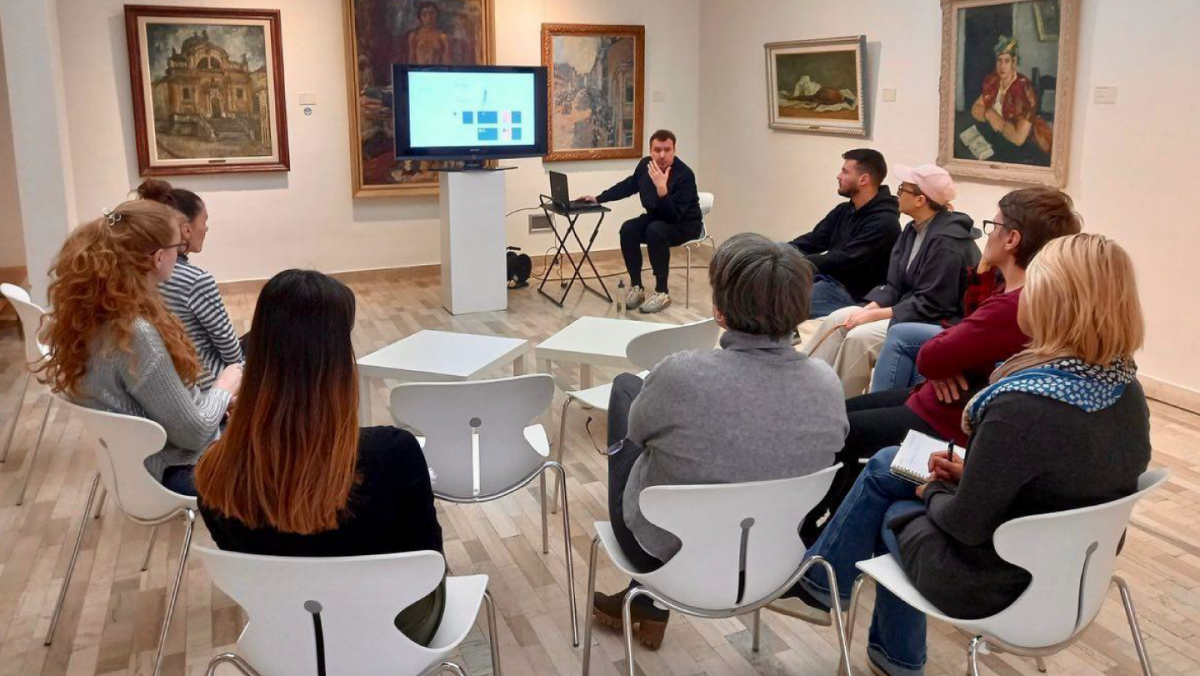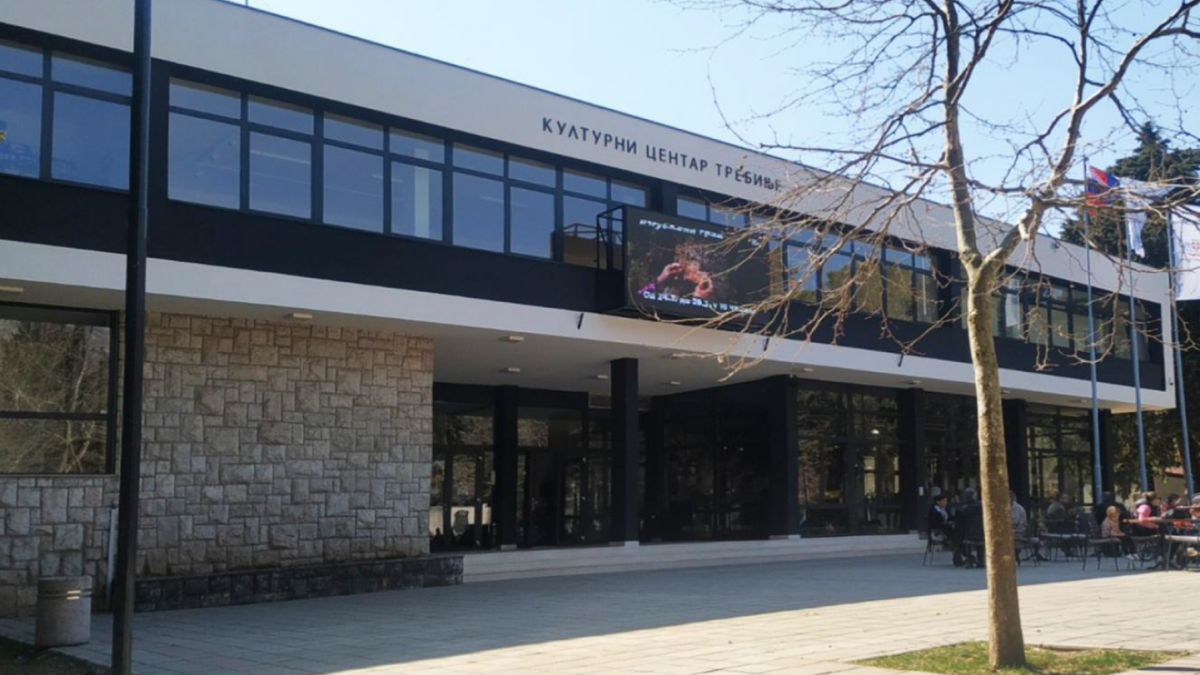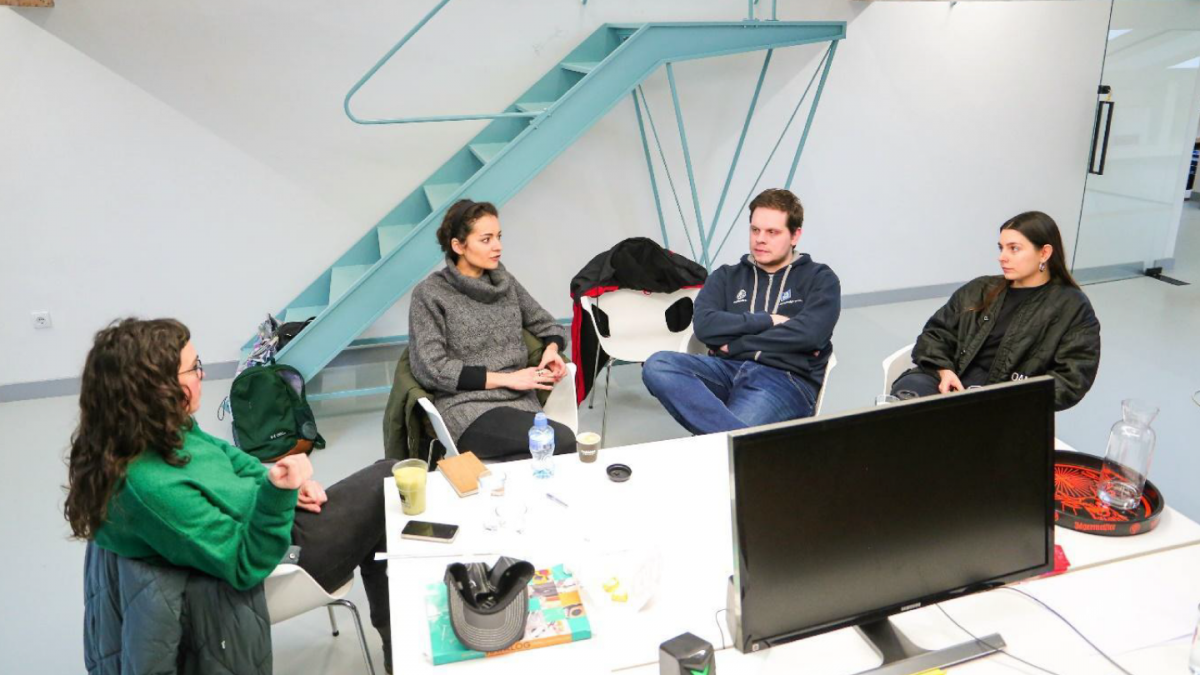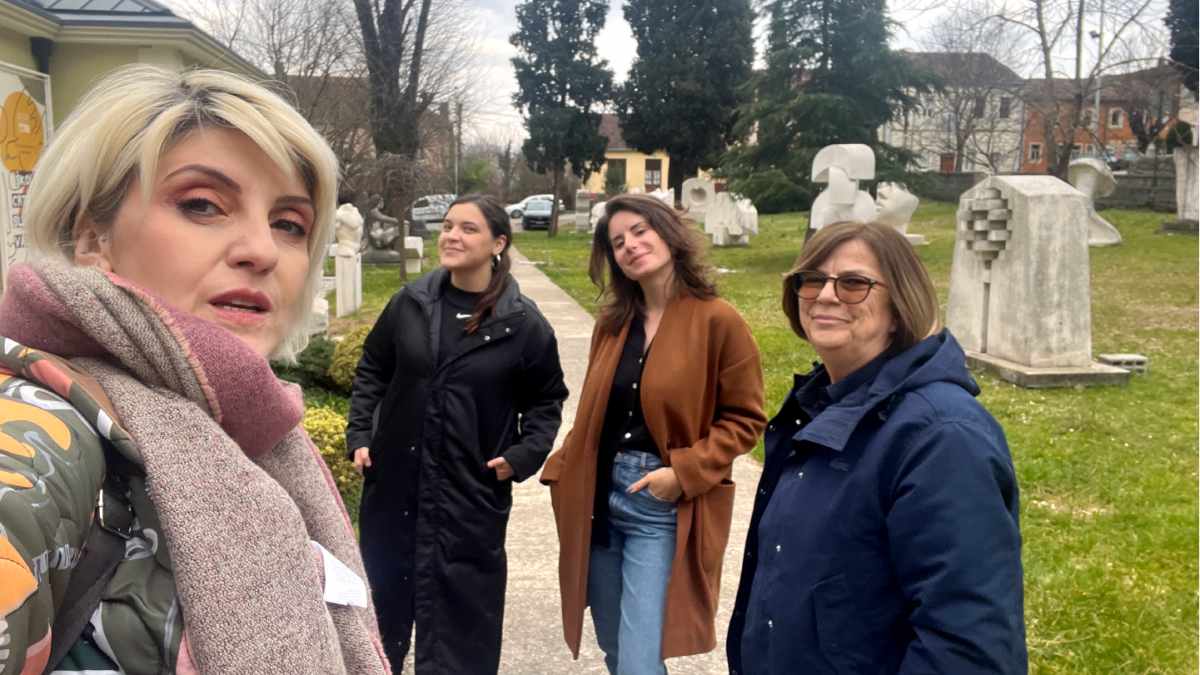A year ago, everything started in the same place for each team individually, and one more year is left to close the full circle called ReCulture. Let’s travel through time a little bit and see what happened in cultural institutions two months ago. Four cultural institutions in the Western Balkans have received 5-day visits from design teams as part of a case study project. Each institution was visited by its own design team, and the focus of the discussions was on spatial design segments because a little team magic can overcome any challenge!
 The Pavle Beljanski Memorial Collection
The Pavle Beljanski Memorial Collection
The visit to the institution Pavle Beljanski Memorial Collection (PBMC) in Novi Sad was organized so that the team can keep a sharp eye on spatial design. However, this visit was also used as a set of working meetings with the employees of the institution, where the employees were introduced to the current project segments of identity elaboration. This time, young designers Đurđina Samardžić (SRB) and Stefan Tankov (MK) were more concentrated on the building as a space and looking at the potential of its exterior and interior in order to apply creative solutions that have been developed in the last year. During all five days, the designers, guided by a local mentor Mane Radmanović (SRB), had the opportunity to examine employees’ and audience needs for the space. Based on the photo archive and technical drawings that they received from the employees, the team detected which elements would refine the space in such a way that the space would be cleaned without loss of functionality. The visit to the PBMC was also marked by a meeting with the Management Board of the institution, where the new identity of the institution was presented. The further course of the visit was focused on a longer meeting with the director of the PBMC, to whom proposals for spatial design, a proposal for souvenirs, development of identity and its use on social networks were presented. This topic was continued with a meeting with the PR manager, who gave comments to the team regarding the continuation of work on the design of the website and proposed solutions for social networks.
 Cultural Center Trebinje
Cultural Center Trebinje
The young designers, Arijana Kadić (MNE) and Milena Tišić (SRB), were welcomed in Trebinje by the director of the Cultural Center Trebinje, Miljan Vuković, and the mentor of the team, Nada Arnaut (B&H). At the first meeting, the director presented to the team what are the priorities in the work on spatial design, as well as practical suggestions related to signage, as well as thoughts on the design of the gift shop in the foyer of the Cultural Center. During the visits, the design team toured the institution and held discussions with staff and management about the design elements of the space. Since the designers were already involved in the workshop for spatial design led by minor Wolfgang Fiel, on this occasion they presented some of the solutions they came up with during the workshop. Along with new questions that arose during their stay at the institution, the team had the opportunity to discuss all the doubts with the employees and to get feedback on the further development of solutions for spatial design elements. And not only that! The team also presented its proposals for a set of souvenirs, from promotional materials to specific souvenirs, which would be an additional program and offer of the Cultural Center.
 Museum of Contemporary Art of Republic of Srpska
Museum of Contemporary Art of Republic of Srpska
In Banja Luka, they talked about the Museum of Contemporary Art of Republic of Srpska (MoCARS), which hosted young designers Luka Matić (B&H) and Sonja Jovanović (SRB). With its mentor Nemanja Mićević (B&H), the team made a detailed plan so that this visit would be used to the greatest extent possible,not only to finalize the proposals regarding the solutions for the souvenirs and the website, but also to carry out the necessary analysis on the spot for tasks related to the spatial design. The candidates met with professor of graphic design Nenad Malešević, and presented him with a current section of the work on the new visual identity and received feedback with suggestions and criticism. Professional guidance through the current exhibition in the Museum of Contemporary Art of the Republika Srpska “25 years of the Academy of Arts of the University of Banja Luka” was organized with curator Isidora Banjac. In this way, the candidates got to know the exhibition space, the office space and the courtyard of the official entrance of the museum. They were able to map potential elements that could be used in a project task related to spatial design. The visit plan also included a Zoom meeting with architects Milica Lopičić and Pavlo Stamenović, who designed the reconstruction of a part of the MoCARS, and the candidates had the opportunity to hear suggestions regarding visual identity and advice for solving project tasks related to spatial design. In the following, a meeting was held with the representatives of “POPART market”, where new ideas for souvenirs were explored. An additional plus would be cooperation achieved by involving the local community through private and public partnership with a focus on young creatives.
 Artistic Colony Danilovgrad
Artistic Colony Danilovgrad
Designers Julija Radosavljević (SRB) and Snežana Bulatović (MNE) with their mentor Adela Zejnilović (MNE) analyzed the space of the Artistic Colony Danilovgrad, the interior and exterior, the sculpture park, the surroundings of the Colony, in order to more clearly articulate the problems and possible design solutions and interventions in the space. This phase of the project was realized through five days of presentations and discussions with the employees of the mentioned institution. The primary presentation was about future spatial design, spatial marking and creation of elements that could be realized during this project. Upon arrival in Danilovgrad, the designers and the mentor analyzed the space of the gallery and the Sculpture Park on this occasion. Through several meetings, the team introduced the director of the institution, Vesna Jovović, to what was done in the previous period through mentoring sessions and workshops with EU mentors.The main motive for developing the elements of the spatial design of the gallery and the sculpture park was related to improving the interactive experience of visitors, preserving the integrity of the sculpture park itself and nurturing the artistic experience. The visit to the institution was a key part of the final stage of the spatial design process, as it enabled the designers to gain important information and insights about the space, the purpose of the space and the needs of the users. Also in this phase, conversations with the client and observation of the existing space were key, in order to determine what needs to be changed, improved or added. The work on cleverly designed spatial design elements is just a continuation of the new visual identity that the institution intends to realize through a series of souvenirs, as well as a new website, about which the team gathered new information from the employees during this visit.
Overall, the case study visits were a success, with both the design teams and institution staff learning a lot from each other… Again! Both sides parted ways with much anticipation – to improve the design and functionality of each institution’s space, with the hope of enhancing the visitor experience and making each institution a more welcoming and enjoyable place to be.